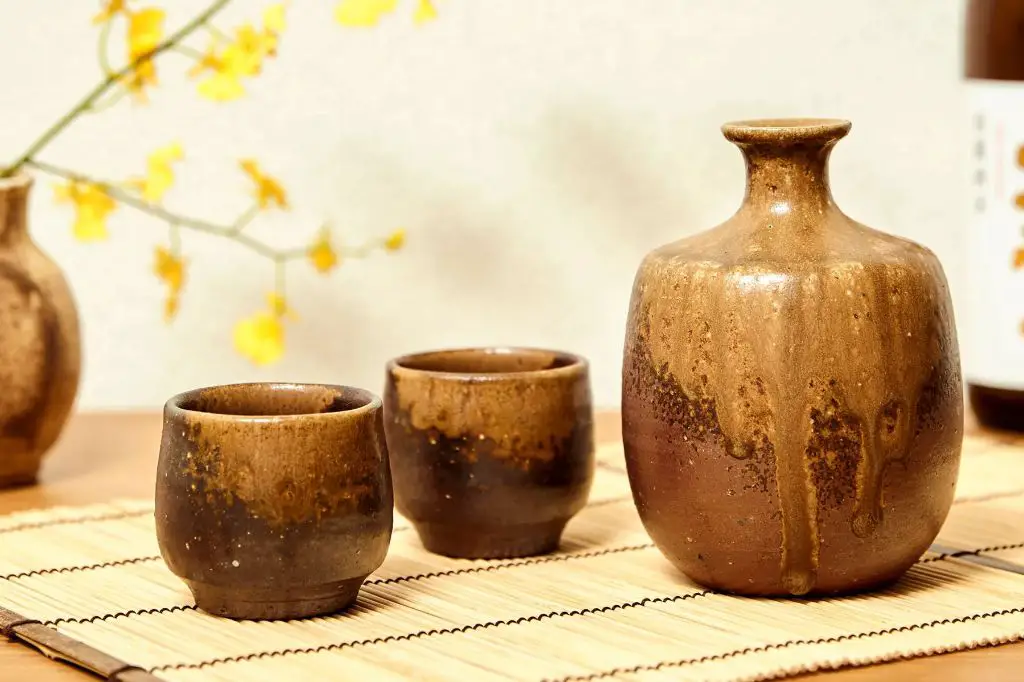Can You Drink Out Of Pottery Mugs?
Can Your Morning Coffee Get an Upgrade?
We all start our day with a hot cup of coffee or tea. But have you ever considered drinking it from an elegant ceramic mug instead of a plain disposable cup? Pottery mugs offer an attractive, earthy look and feel that can elevate your daily ritual. In this article, we’ll explore the history, types, pros and cons of pottery mugs to help you decide if upgrading your mug collection is worthwhile.
History of Pottery Mugs
The origins of pottery mugs can be traced back thousands of years. Early pottery vessels were made from clay and other natural materials and were initially used for storing and carrying water. According to the Brewminate, some of the earliest known pottery vessels that functioned like mugs date back to around 9000 BCE in China https://brewminate.com/the-history-of-coffee-mugs/.
Over time, civilizations began using pottery for drinking vessels and mugs, especially with the introduction of beer and wine. The ancient Egyptians produced pottery drinking cups as early as 3000 BCE. The ancient Greeks and Romans also created pottery mugs and drinking vessels, some featuring ornate decorative styles https://medium.com/@cosmiccoffeemarketplace124/the-history-of-coffee-mugs-from-ancient-times-to-modern-designs-fcefe9774fcf.
A major innovation was the development of glazing techniques, such as early tin-glazed earthenware in the 9th century Persia. Glazes made pottery more attractive, durable, and functional for containing beverages. The pottery wheel also enabled more refined production. Porcelain’s invention in 600 CE in China was another breakthrough, as it was thin, lightweight and did not affect the taste.
Types of Pottery Mugs
There are three main types of pottery used to make mugs: stoneware, earthenware, and porcelain.
Stoneware
Stoneware is a type of pottery made from clay that is fired at a high temperature, which makes it very strong and durable. According to Etsy, stoneware mugs are one of the most popular types of handmade pottery mugs. Stoneware mugs can withstand high temperatures, so they can be used for hot drinks. They also tend to be heavier and thicker than other types of pottery mugs.
Earthenware
Earthenware is pottery made from clay fired at lower temperatures than stoneware. According to Alibaba, earthenware mugs are commonly mass produced. Earthenware is more porous than stoneware, so earthenware mugs should be glazed to make them waterproof for holding liquids. Unglazed earthenware can soak up liquid. Earthenware mugs are lighter weight than stoneware.
Porcelain
Porcelain is a delicate, translucent type of pottery made by firing clay at very high temperatures. Porcelain mugs are smooth, fine-grained, and thin-walled. They are chip-resistant and ideal for displaying detailed decorative designs. However, porcelain is less durable than stoneware and more prone to chipping or cracking if dropped. Porcelain mugs should be handled with extra care.
Advantages of Pottery Mugs
Pottery mugs provide several advantages over mugs made of metal, plastic or glass. Some key benefits include:
Natural Materials – Pottery mugs are typically made from all-natural clays and minerals, free of chemicals, dyes and toxins. The raw materials come directly from the earth, resulting in an eco-friendly product.
Thermal Insulation – The natural clay material provides superior insulation to retain heat and keep beverages hot longer. Glazed ceramics can maintain temperature better than metal or glass.
Aesthetic Appeal – Pottery mugs have an artisanal, handcrafted look and feel. Each piece is slightly unique with natural variations in the clay, glazes and firing patterns. Many find pottery more visually appealing than factory-made mugs.
In addition to their durability and longevity, the natural materials and handmade craftsmanship of pottery mugs provide thermal, aesthetic and eco-friendly benefits that enhance the drinking experience.
Potential Downsides
Pottery mugs made from ceramics or other porous materials have some potential downsides to consider:
They tend to be heavier than mugs made from materials like plastic or glass. The weight of a ceramic mug can make it more difficult to hold and lift compared to lighter options.
Ceramic mugs can chip or crack if dropped or exposed to sudden temperature changes. Small cracks in the glaze may allow liquids to seep into the porous ceramic material over time.
Most ceramic mugs cannot be cleaned in the dishwasher and require handwashing to avoid damage. The porous nature of ceramic means that food and drink can stain the interior if not promptly cleaned.
According to https://themugglife.com/ceramic-mugs-advantages-and-disadvantages/, ceramics are not as brittle as porcelain and glass, but they may still be susceptible to chipping and cracking if handled roughly.
Safety Considerations

When choosing pottery mugs, it’s important to consider safety factors like lead content and durability in the microwave or dishwasher. According to the FDA, ceramics should not leach more than 7.0 ppm of lead when tested according to ASTM C738 test methods 1. Reputable manufacturers will often list if their products are lead-free or meet certain lead testing standards. It’s best to avoid antique or handmade pottery from unknown origins, as lead glazes were more commonly used in the past.
In terms of microwave and dishwasher safety, most commercial stoneware mugs are durable enough for everyday use. However, some handmade or decorative mugs may not withstand sudden temperature changes and could potentially crack. It’s best to check the manufacturer’s instructions to see if a particular mug is microwave and dishwasher safe. Mugs with metallic paints or gold leaf accents are generally not recommended for microwave use. When in doubt, handwashing is the safest option to properly care for pottery mugs.
Care and Maintenance
Properly caring for pottery mugs will help ensure they last a long time. Handwashing pottery mugs is generally recommended over dishwashing to avoid exposing them to extreme temperature changes and harsh detergents (https://mtartspottery.com/pages/product-care). Use warm, soapy water and a soft sponge or cloth when handwashing. Avoid abrasive scouring pads or cleaners that could scratch the glaze.
As handmade pottery is porous, rinsing mugs shortly after use can help prevent staining from coffee, tea, or other liquids (https://www.joyceandjoan.co.uk/pages/mug-care). Letting liquids sit in a mug for extended periods can lead to permanent staining or flavor absorption. It’s also best to avoid sudden temperature shocks like pouring hot liquid into a cold ceramic mug, which could potentially cause cracking.
If a mug does get a small chip or crack, specialty glues can be used to repair minor damage and prevent further splitting. But cracks may weaken the structural integrity of a mug over time. Heavily damaged mugs should be discarded and replaced.
Environmental Impact
When it comes to the environmental impact of pottery mugs, there are a few key considerations. The natural materials used to make pottery, like clay and minerals, are generally seen as more eco-friendly than plastics. However, the glazes used to coat pottery can contain chemicals like lead, cadmium, and fluoride that may be harmful if they leach into drinks. According to the PBS article, unglazed ceramics may also leach minerals and metals into beverages.1
In terms of reusability, pottery mugs tend to last for many years and can be used hundreds or thousands of times. This gives them an advantage over disposable cups made of paper, plastic, or polystyrene foam, which create more waste. As the PBS article points out, the energy needed to create a ceramic mug is quickly offset by reusing it rather than using disposable cups.1 So while manufacturing pottery does have some environmental impact, mugs that are frequently reused have less of a footprint over time compared to disposables.
Cost Analysis
Pottery mugs can range in price depending on the quality and type of clay used, any decorative elements, and the skill of the potter. However, quality handmade mugs tend to start at around $15-20. Many excellent mugs fall in the $20-40 range from artisan potters. More elaborate, decorative, or large mugs can cost $50-100 or even more.
While pottery mugs require a higher upfront investment than mass-produced mugs, they can actually save money in the long run due to their extreme durability. With proper care, a good handmade mug can literally last a lifetime, becoming an heirloom passed down through generations. That longevity makes them a worthwhile investment for people who enjoy artisan crafts and want something special to use daily.
Conclusion
Pottery mugs are a timeless and charming way to drink your favorite beverages. Their origins date back thousands of years, and they continue to be popular today. With proper care and maintenance, pottery mugs can last for decades. Crafted from natural clay, they are also more eco-friendly than disposable cups.
The main advantages of pottery mugs are their aesthetics, durability, thermal properties, and environmental benefits. However, they can chip, crack, or break if handled roughly. Lead and other toxins can also leach into beverages if the glaze or clay contains impurities. This is rare with high quality materials, but something to be aware of.
Overall, pottery mugs make a wonderful addition to any home or office. They allow you to enjoy drinks in style while reducing waste. As long as you inspect them for damage and wash them properly, pottery mugs are generally safe to drink from and make a smart, sustainable choice.


